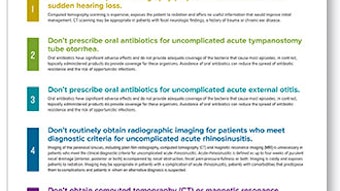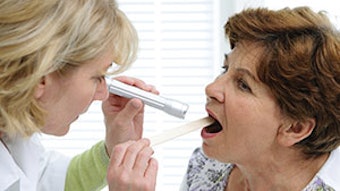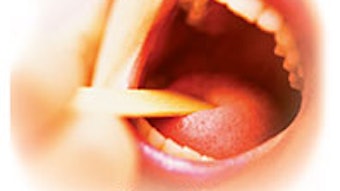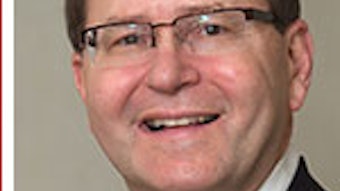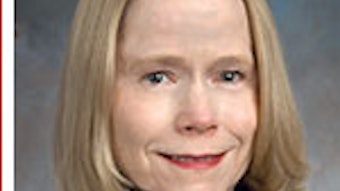Otolaryngology-Head and Neck Surgery Rotation at Parirenyatwa Hospital, Harare, Zimbabwe
I spent January 26–February 23, 2014, on a surgical rotation at Parirenyatwa Hospital (“Pare”), the main teaching hospital of the University of Zimbabwe in Harare. There are only seven consultant otolaryngology attendings in the entire nation of Zimbabwe, which has a population of 14 million people.
By Josephine A. Czechowicz, MD, Chief Resident, Stanford University Department of Otolaryngology-Head and Neck Surgery
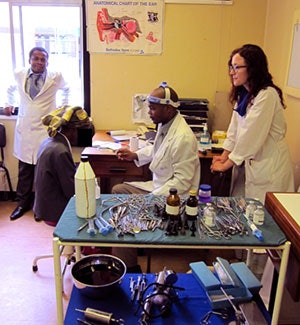 Preparing to perform a tonsil biopsy of a patient with an exophytic mass. From left to right: Dr. Mlambo, Dr. Dzongodza, and Dr. Czechowicz.
Preparing to perform a tonsil biopsy of a patient with an exophytic mass. From left to right: Dr. Mlambo, Dr. Dzongodza, and Dr. Czechowicz.I spent January 26–February 23, 2014, on a surgical rotation at Parirenyatwa Hospital (“Pare”), the main teaching hospital of the University of Zimbabwe in Harare. There are only seven consultant otolaryngology attendings in the entire nation of Zimbabwe, which has a population of 14 million people. Residents are the first line of care at Pare—they run the clinic, rounds, plan the operative schedule, and perform procedures. Upon my arrival at Pare, I was integrated into the resident team.
I expected to see advanced pathology, but my first day was even more overwhelming than anticipated. Our service included:
- A 12-year-old male who was post-op day seven after orbital exenteration for a massive sinonasal rhabdomyosarcoma.
- A 14-year-old female with a sinonasal rhabdomyosarcoma invading her orbit and restricting her extra-ocular movements.
- A 32-year-old police officer who underwent emergent tracheostomy, then wiring of facial fractures, after his gun accidentally discharged in his face.
- A 55-year-old gentleman who had undergone a slash tracheostomy in clinic presenting with advanced laryngeal carcinoma.
- A 2-year-old male who was post-op day one from his fifth debridement for respiratory papillomatosis.
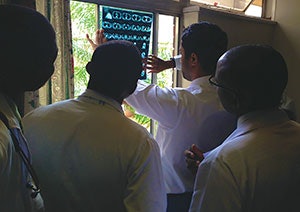 Radiology rounds on the wards. From left to right: Dr. Innocent, Dr. Divi, and Dr. Katurura.
Radiology rounds on the wards. From left to right: Dr. Innocent, Dr. Divi, and Dr. Katurura.During my four-week rotation, I performed five tracheostomies in the ICU (three adults with brain injuries, one on a 7-year-old cerebral malaria patient, and another on a 2-year-old with TB meningitis). We took four children to theater in varying levels of distress from laryngeal papillomatosis. There was no microscope, no microdebrider, and no laser. The disease was removed using a cold forceps technique.
One condition I had never seen in the United States, but is a common AIDS-defining illness in Zimbabwe, is squamous cell carcinoma of the conjunctiva. Our patient was two years out from left orbital exenteration and presented with a metastatic lymph node in the parotid that failed to respond to radiation. We performed a total parotidectomy with facial nerve sacrifice and salvage neck dissection.
An unfortunate gentleman presented to casualty with a self-inflicted neck wound completely transecting his thyrohyoid membrane and severing his epiglottis. We intubated through the wound, placed a trach, explored his neck in theater, and performed a loose approximation of the tissues, leaving a drain and feeding tube to allow for healing by secondary intention.
Some of the contributions we made at Pare include:
- Emphasizing multidisciplinary care for cancer patients. Based on our discussion of a group of pediatric patients with rhabdomyosarcoma, the ENTs at Pare are working to establish their own tumor board.
- Systematization of data recording for patients with head and neck cancer. We worked with the residents to create a data collection sheet detailing each patient’s cancer history, medical history, and demographic information, to allow for data analysis and to avoid loss of contact and follow-up with patients.
- Teaching surgical skills and expanding knowledge on reconstructive options for head and neck as well as pediatric airway management. We had multiple educational sessions with medical students, registrars, and attendings. We also spent a good deal of time with residents in the operative theater, emphasizing the improvement of technical skills, and planning for airway difficulties.
I am even more enriched by the lessons I learned at Pare:
- Exposure to conditions and severity of disease rarely encountered in the U.S. setting.
- Taking inspiration from the work ethic of the registrars with their sponge-like desire for information.
- Reliance on clinical skills to diagnose and treat patients in the absence of expensive and technologically advanced investigations. Overall, my time at the University of Zimbabwe at Parirenyatwa Hospital in Harare was an incredibly positive experience. I look forward to continuing my professional collaboration and friendship with my colleagues there for many years to come.
I am grateful to all who made this experience possible: the American Academy of Otolaryngology—Head and Neck Surgery Humanitarian Grant and the Stanford University Center for Innovation in Global Health, Novel Education Clinical Trainees and Researchers (NECTAR) Program; my supervising otolaryngologist, Vasu Divi, assistant professor of otolaryngology, Stanford University; and my local contacts, Clemance Chidziva, professor of otolaryngology, University of Zimbabwe, and Cameline Nyamarebvu, assistant professor of otolaryngology, University of Zimbabwe.
